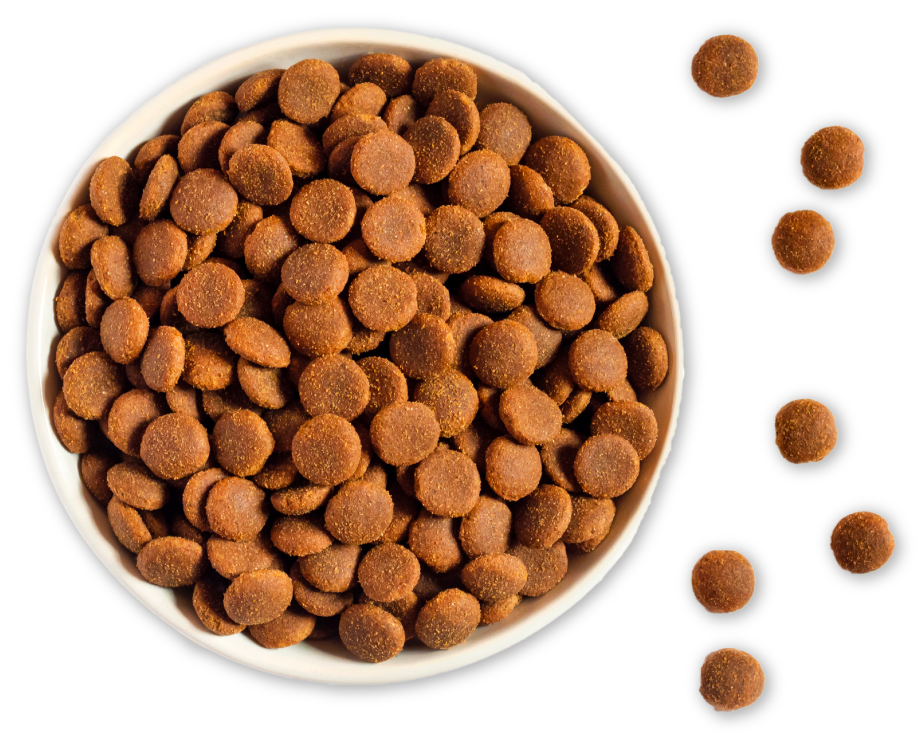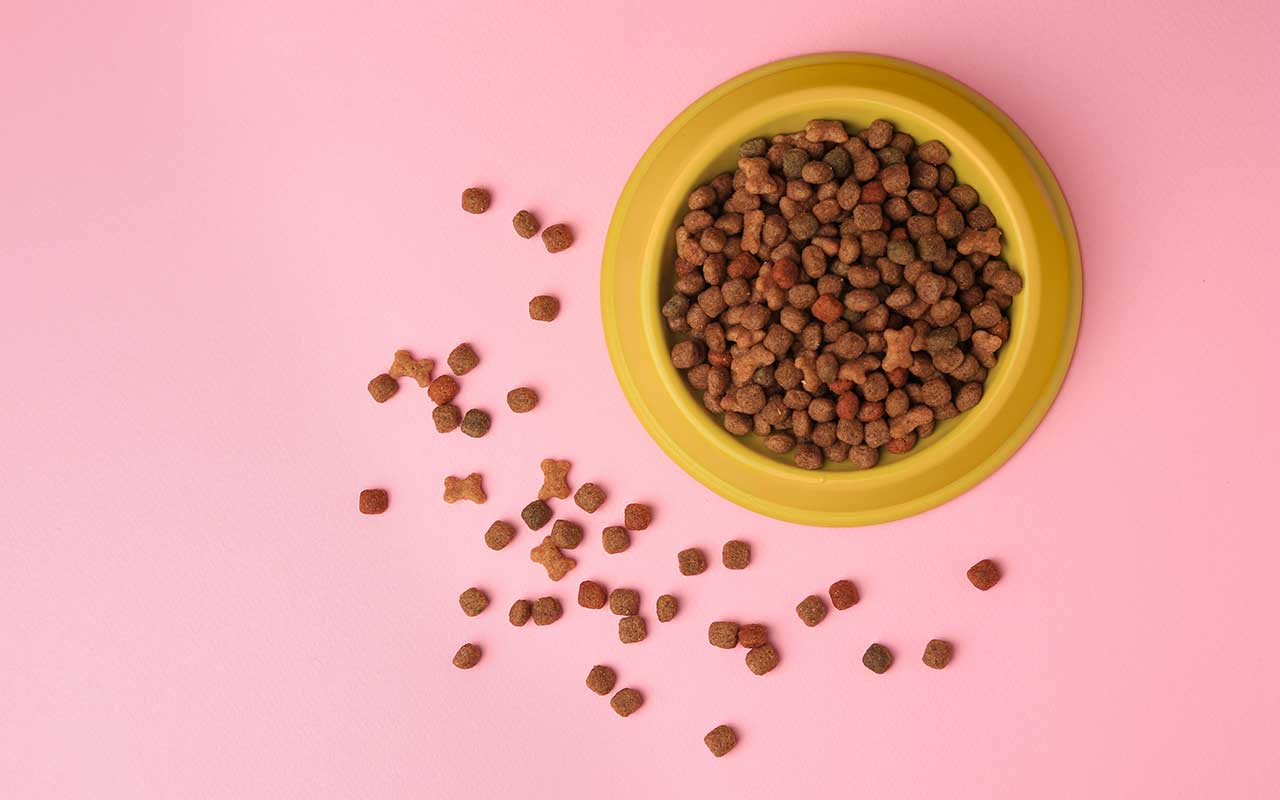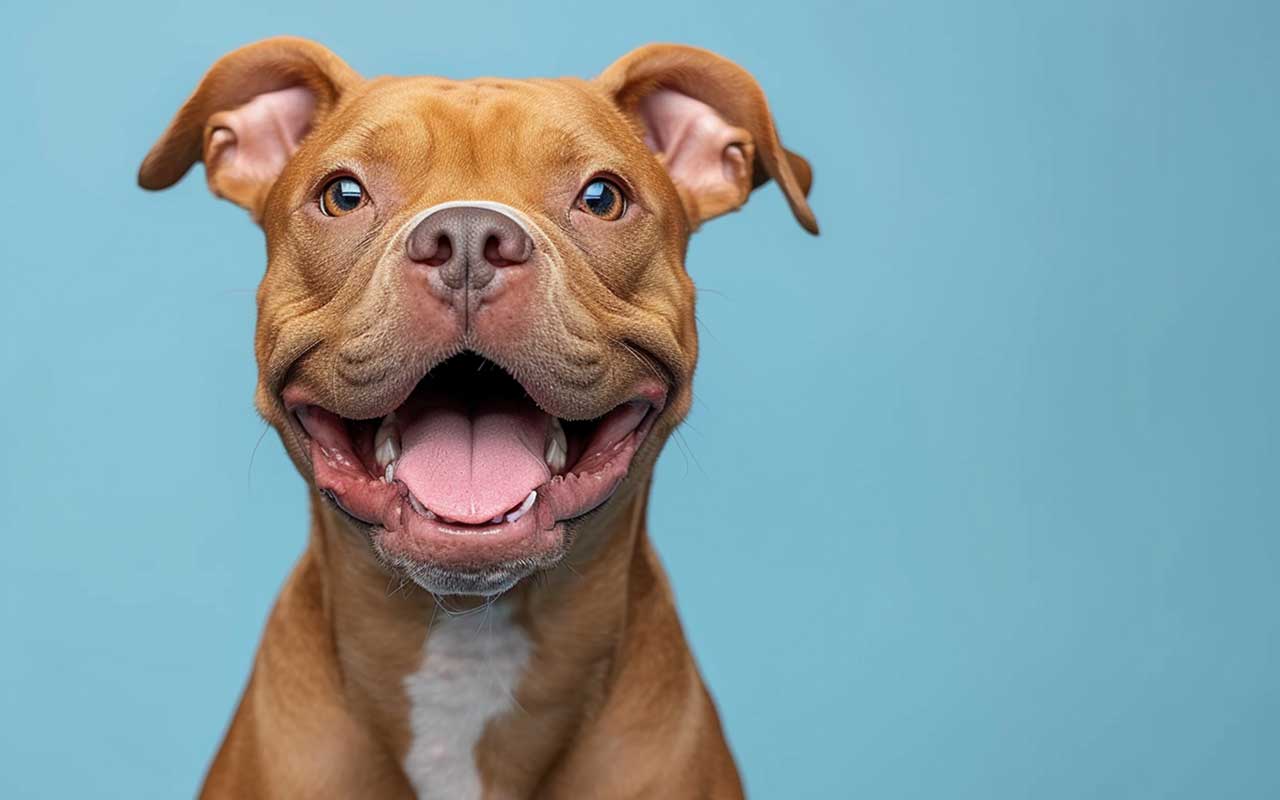
Unleash Your Palatant Potential
Create a diverse range of products loved by pets and the people who care for them.


Pet food brands are often stuck with palatants that fail to push the boundaries of innovation. Our four-legged friends deserve better.
Our artfully curated palatants are designed to elevate the taste of pet food and treats, creating unforgettable taste experiences loved by pets and their owners.
Our palatants are the secret ingredient behind some of the world’s most beloved pet brands. Let’s incorporate them into your formulations, unlocking a world of possibilities and setting your products apart in the market.
of dogs preferred Trilogy Flavor’s Pepperoni flavored biscuit.
"*" indicates required fields

©2025 Trilogy Flavors. All Rights Reserved.
Privacy Policy | Terms + Conditions

Most of us treat our pets like members of the family. We want to do everything we can to improve their lives and well-being. To ensure that your pet is getting all of the nutritional and healthy benefits from their food, they have to eat the right quantity of high-quality products. If your pet isn’t eating the right amount, they are not reaping the maximum benefits of what they consume. One way to improve their nutrition and health is to improve their food’s palatability with flavors to ensure that enough is eaten. Companion animal flavor chemists create flavors for pets that please both the pet and the owner by understanding the best types of flavors and processes used in pet food applications.
There are several factors that need to be considered when developing pet food. First, pet food is created within specified label parameters, similarly to human food. Owners often consider label requirements such as natural, non-GMO, and organic. Second, functionality is an important factor. Owners may want products to contain ingredients that will maintain their pet’s coat, skin, nails, and teeth, among other things. Pet’s diets do not vary as much as our diets, and therefore their food must deliver the needed nutrition while maintaining palatability. Third, the name and aroma of the flavor must appeal to the owner. A pet owner is less likely to buy a product with an off-putting smell or label. For example, filet mignon or grilled salmon are appealing names that make an owner feel confident in the high quality of their pet’s food. Since pets are considered members of the family, owners want to treat their pets to the best food.
The most common forms of pet food are liquid, dry, compounded, reacted and/or combinations. Pet food flavors are created for extruded food, canned food, baked treats, oil sprays, bag seals and “spikes”. Spikes are used to enhance or boost palatability. For example, spikes are used in a cheap liver digest. Depending on the desired flavor profile, flavor can be applied at various points using a range of methods along the production process. The same flavor used at different times throughout the product can result in different flavor profiles.
With a basic understanding of the importance of palatability, let’s take a look at the differences in taste preferences between cat and dog food. Understanding these differences is key to a targeted approach when developing pet food.
Cats, as obligate carnivores, like higher protein diets over lower protein diets. Their taste system is tuned to detect compounds in animal tissues (amino acids, peptides, etc.). They are more likely than dogs to avoid spoilage aromas. They lack lateral jaw movement; hence, texture and size are very important. They also lack molars, and cannot grind their food. Acidification helps salivation which helps them swallow their food. Surface texture also plays a role in palatability. In general, compared to dogs, cats are much more sensitive to texture and taste. A focus on fresh protein flavors in an easily chewed form is of importance.
In contrast, dogs are omnivores. They tend to respond to a wider variety of flavors, including sugar, and they appear to prefer higher impact, roasted aromas. Because of their strong sense of smell, dogs will also tend to choose diets based on aroma. PAL (palatability) testing conducted on dogs, shows a strong link between their first choice of food and total consumption.
Most flavors for pet food are divided into two general classes (1) reaction flavors/digests and (2) compounded flavors. Both can have liquid or dry forms and be added internally or externally to the food matrix. In other words, the complete reacted flavor can be added to the final product (eg. Kibble) or the flavor can be designed to react during the processing of the pet food. Compounded flavors are exactly what the name implies, and are very similar to the flavors created for humans. Reacted/digest flavors often utilize the hydrolysates of a meat, fish, vegetable, or grain as a source of free amino acids necessary for Maillard reactions. The flavorist will employ a variety of hydrolysis schemes in order to generate the desired free amino acid profile for the end flavor desired. In combination with this amino acid mixture, the flavorist chooses carbohydrate sources for the necessary carbonyls to promote a reaction. Precursor flavors can be added at this point prior to the actual reaction. Like other reaction flavors, they can be produced under atmospheric or pressurized conditions and at various temperatures. Post reaction is the preservation phase where the final flavor will be stabilized with several ingredients to slow oxidation and inhibit yeast, mold, and bacterial growth. This is to help ensure the safety of the end-product which, like human food, is highly regulated.
The safety of pet food is important and flavorists must keep current with the numerous regulatory bodies globally that govern the pet food industry: FDA, USDA, EU and FEMA. In the United States, the Association of American Feed Control Officials (AAFCO) reviews ingredients for pet food flavors and publishes approved ingredients in their Official Publication (OP). One must be careful when formulating for animals; some ingredients that are safe for humans are not safe for cats (propylene glycol) or dogs (alkaloids like theobromine from cacao plants & xylitol). Pet food flavor creation is complex and requires an understanding of ingredients, processing, owner’s desires, pet’s needs and in-line flavor processing.

Have you ever wondered how pet food flavor chemists create flavors? There are many factors that determine what flavor materials and processes they use to create products that your pet loves. How does your pet tell us what flavors, foods, and treats they like? Palatability (PAL) testing is critical to determining what flavor to use in a product. Since pets cannot speak to us, we must use other methods to learn what they like.
When creating flavors for dogs and cats there are several key factors to consider. The first factor is the type of pet (dog or cat). Along with knowing the type of pet, we must consider the raw material choices for the food or treats, and how the food is processed. Raw materials like grains, coupled with a low-cook process will need more flavor work and palatability enhancement than a diet consisting of meat as the main ingredient, even when processed under similar conditions. Extrusion, baking, and canning, all have their respective key raw material sets, and can vary widely in addition to processing conditions (cook time, temperature, pressure, flavor introduction points). The flavor profile will depend on whether the flavor will be applied post processing, during processing, or included in the raw material mix. Lastly, animals can also be conditioned through experience to prefer certain flavors and textures, due to age, location, and health conditions.
Once the final product is created, it must be tested for palatability. The most common type of testing is a split plate, two bowl test. During this test, animals are given two bowls with different profiles and asked to indicate their preference. On the second day, the bowls are switched to negate handedness and to ensure that a clear choice is made. The feeding process can be videotaped, visually monitored, or animals can be fitted with RFID chips to determine what bowl the animal chooses and eats from. First choice, consumption ratio, and total intake are measured. The data is then analyzed to determine if a statistically significant choice is made.
Knowing the differences in preferences between cats and dogs helps in designing palatability tests. In general, dogs tend to make choices with their noses. In standard two bowl testing, the correlation between first choice and total consumption is very high while in cats it is not. Cats tend to “graze” for longer periods, while dogs tend to eat within 10-30 minutes. Dogs tend to prefer more roasted, cooked, and umami flavors. Cats tend to prefer proteins (proteinaceous notes) as they are carnivores. Another thing to consider is that cats lack the ability to grind food and lack lateral jaw movement which makes texture and salivation type flavors important. Cats also eat for metabolic needs unlike dogs. When deciding on the right flavor for a pet, it is critical to have knowledge of all the raw materials, processes, and potential application points. This enables the flavorist to create winning flavors that delight both pets and owners.
The process of flavor creation and application for pets is very involved and requires great knowledge of the raw materials, products, processes, and testing methods to win in the market! Flavor is critical when developing a product for palatability testing, so please contact TEI to discuss your flavor needs.

Among pet owners, there is a general increase in awareness of health and wellness for their pets. As discussed in Trilogy’s Spotlight On Pet Food Trends post, the humanization of pet products has consumers seeking better-for-you pet foods. Pet owners not only seek nutritious foods and treats for their pets, but now they seek products that offer functional benefits such as anxiety relief, digestion support, and dental health. Like humans, to stay healthy, pets need regular veterinary exams, vaccinations, and parasite prevention as well as weight management, and exercise. For example, pet obesity is on the rise. According to the Purina Institute1, worldwide, studies estimate that up to 63% of pet cats and 59.3% of pet dogs are overweight or obese. Like obesity in humans, it can lead to health problems and disease in pets. Accelerated by the pandemic, mental health conditions and awareness are on the rise for both humans and pets. CBD-infused food and beverages have been emerging in human products and are now appearing in pet products. Pet owners want what’s best for their pets and to keep them healthy. However, keeping pets healthy is becoming increasingly expensive. The cost of pet food is up 25% since 2020, and vet care is now 11% more expensive than in 2022, according to USA TODAY Blueprint2.
To stay healthy, pets need veterinary care, and some pet owners even have pet insurance. According to the Business Research Company3, the pet insurance market has grown from $7.92 billion in 2023 to $9.22 billion in 2024, with a 16.5% CAGR. The total number of insured pets has seen double-digit increases in the last four years, with an average growth rate of 26.6% since 2018, according to the North America Pet Health Insurance Association4.
The American Veterinary Medical Association’s5 (AVMA) 2023 Pet Owner Attitude Survey revealed:
USA TODAY Blueprint’s data2 discovered that to keep up with rising pet costs, respondents have cut back spending in a variety of ways:
For example, recognizing the cost-of-living crisis affects people and pets, Canadian-based pet food brand Wilder Harrier is creating a network of Community Pet Pantries. Struggling families can pick up donated food for their animals at a Community Pet Pantry.
As the term “health and wellness” evolves for humans it also develops for pet owners and how they keep their pets healthy through pet food, treats, and supplements. “Pet parents are seeking formulas that provide specific health benefits to their four-legged companion,” states Lynn Dornblaser of Mintel6.
According to Mintel’s research7:
Similarly, NielsenIQ’s research8 found pet food searches for holistic health ingredients and functional health ingredients have increased by double digits year-over-year. The search volume for “calming” pet products has increased by 42% since March 2021, and consumers are also searching for dental and breath health, sensitive stomach, and human-grade options in pet food. According to Jeremy J. Petersen9 of Identity Pet Nutrition, “cat parents are looking for diets that can help provide a solution to common ailments like kidney disease, urinary concerns, IBD, and diabetes.”
Pet parents approach their pets’ health and well-being the same as they do for themselves. Pet owners often use treats to bond or reward their pets’ behavior. For example, 76% of U.S. pet food buyers say that giving treats helps to strengthen the bond with their pet, while 54% of UK pet food buyers give more treats to their pets as a result of the pandemic, according to Mintel10. According to Technavio11, the pet treats market size is expected to increase by $9.10 billion between 2023 to 2028, with a CAGR of 6.57%. Like pet food, pet owners are interested in treats and toppers that promise functional health benefits with functional claims growing in the pet food aisle12. Life stage-specific products are common in pet food and are slowly moving into treats creating new opportunities.
Additionally, the pet supplement market is growing. The global pet supplement market reached $1.3 billion in 2023 and is expected to reach $2.0 billion by 2032, with a CAGR of 5.2%, according to IMARC Group13. Innova Market Insights’ data14 showed new pet food launches recorded a CAGR of 6.8% between 2018 and 2022, with the top performing subcategory being cat and dog supplements, with a stunning 84% growth. According to MarketPlace15, 24% and 22% of pet supplement shoppers consider supplements with “veterinarian-recommended” and “veterinarian-approved” claims to be highly effective, respectively. “Clinically supported,” “veterinarian-formulated” and “science-backed” are also associated with high efficacy. For example, Honest to Goodness™ Plant Snacks check all the boxes. The functional, plant-based dog treats are “formulated with fruits, vegetables, and advanced nutrients. The treats are minimally processed, developed by veterinarians, and focus on specific health conditions in dogs. Each variety contains one to three ingredients at functional levels, a science-based postbiotic and marine microalgae oil.”
To keep pets healthy, pet parents and their pets need nutritional food, treats, and supplements to be palatable. Trilogy’s PAL tested, high-quality reaction flavors are vegan and human-grade. Our flavors are meatless and do not fall under USDA regulations. Be the cat’s meow and give your pet formulas a leg up. Treat your pets and request samples here.
The human trends happening in individuals’ health journeys are continually evolving. Pet owners will continue to project their personal health and wellness preferences and standards into their pets’ diets like clean labels, plant-based ingredients, CBD-infused, and functional products with specific health benefits. The humanization of pets is also apparent in the amenities that humans have. Restaurants, bars, and delivery services cater to pet owners and their pets by offering pet food menus, customized pet food plans, and experiences. For example, DTC meat and seafood brand ButcherBox launched ButcherBox For Pets. The line features dog food, treats, and custom meal plans formulated with humanely raised, sustainably sourced beef and chicken. The brand announced plans to expand with additional treats, supplements, meal toppers, and a product offering for cats.
Regardless of the products pet owners choose, they need pet food, treats, and supplements to be palatable for their pets. When pets enjoy their food, treats, and supplements, pet parents are reassured that their fur babies are getting the nutritional and functional benefits they need to maintain a long and healthy life. Flavor creation and application for pets is very involved and requires deep knowledge and understanding of the raw materials, products, processes, and testing methods. Flavor is critical when developing a product for palatability testing. Trilogy Flavors understands the complexities of developing flavors for pet food and is here to support the development of your next pet food, treat or supplement. Reach out to collaborate.
